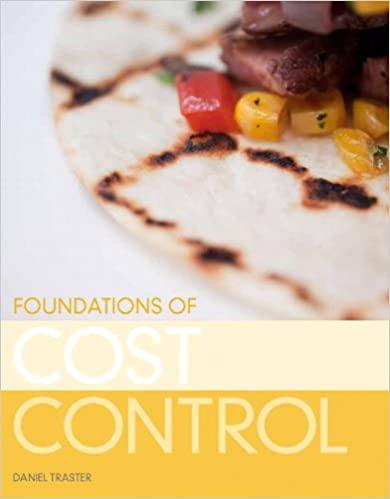Question
Why Buy It When You Can Lease It? Joe Trevino opened his little, upscale Italian restaurant almost 25 years ago in the heart of New
Why Buy It When You Can Lease It?
Joe Trevino opened his little, upscale Italian restaurant almost 25 years ago in the heart of New York City. His specialty was the freshly baked bread oozing with homemade garlic butter and, of course, the delicious varieties of pasta and lasagna. The ambience and aroma were simply out of this world and kept bringing the customers back for more.
An immigrant from southern Italy, Joe put all his savings into his business. With the help of his wife, Sylvia, and their son Henry, Joe kept the restaurant running smoothly and helped it gain tremendous popularity among many New Yorkers. Joe was always proud of the fact that he owned everything in his restaurant, right from the property on which it stood down to the plates on which the food was served. Everything had been paid for with his own hard-earned cash. Being from the old school, Joe always believed that to be a debtor is to be a slave to the lender. He therefore chose to save up and pay cash for whatever was needed.
Over time, the restaurants clientele grew significantly and wait times during peak periods became unbearably long. After careful consideration, Joe relocated the restaurant to a much larger site with ample parking and tables. As always, the move was financed with cash. Then, about three years ago, Joe retired and turned over the business to Henry. Having watched his dad nurture the business, Henry kept up the family tradition of excellent service and personal attention to details.
123
Along with the business, however, Henry inherited some worn-out equipment, which surely had seen better days. Henry was sick and tired of making frequent phone calls to the service company for equipment repairs and maintenance work. As a result, service quality was beginning to deteriorate and profits were being hurt. In particular, three ovens, a dishwasher, and a pasta machine needed to be replaced. The total cost of the equipment, including delivery and installation, was estimated to be $100,000. Three-year modified accelerated cost recovery schedule rates could be used to depreciate the equipment.
If Papa Trevino were at the helm, there would have been enough cash in the coffer to buy the equipment outright. However, under Henry, the cash balance of the firm had shrunk miserably. The problem with Henry was that, unlike his father, he enjoyed a much more lavish lifestyle. The flashy sports car, penthouse, and boat were all paid in full from business profits, leaving scant cash for business renovation and equipment replacement. On numerous occasions, Papa Trevino had tried to counsel his son on the benefits of being thrifty, but to no avail. Young Henry preferred to live for today!
Thanks to Papa Trevinos conservative ways, the credit rating of the restaurant had been exemplary. The money for the equipment could be easily borrowed from their bank at a rate of 10% per year over a five-year term. However, Henry had heard from his business colleagues that in some cases it is better to lease than to buy. Many of his colleagues claimed that they were already enjoying significant benefits as a result of having leased business assets.
After checking around and calling various leasing companies, Henry found that he could lease the needed equipment and appliances from Quicken Leasing Company for an annual lease payment of $25,000 over a five-year term. The lease would carry an option to buy the equipment for $40,000 at the end of five years. Maintenance costs on the new equipment were estimated to be $2,000 per year and would be covered by the annual lease payment. The increased efficiency of the new equipment was expected to result in net cost savings of $4,000 per year.
Henry, being fully aware of his fathers dislike for debt, was seriously thinking about leasing the equipment. However, not being fully conversant with all the pros and cons of leasing versus borrowing and buying, Henry needed answers to a number of questions. Above all, he was curious about Quicken Leasing Companys main slogan, which read Why buy it if you can lease it?
QUESTIONS (PLEASE ANSWER ALL OF THEM)
1) If Quicken Leasing Companys tax rate is 40%, what is the minimum lease payment that it would be willing to accept? Explain.
2) What is the maximum lease payment that Henry should be willing to pay? Explain.
3) How much of an impact does the forecast of the salvage value of the new machine have on the lease versus buy decision?
4) If Henry leases the equipment, what impact would it have on the firms debt capacity?
5) Does the size of the business play any role in lease versus buy decisions of this type?.
6) Does the type of asset under consideration have much effect on the lease versus buy decision?
Step by Step Solution
There are 3 Steps involved in it
Step: 1

Get Instant Access to Expert-Tailored Solutions
See step-by-step solutions with expert insights and AI powered tools for academic success
Step: 2

Step: 3

Ace Your Homework with AI
Get the answers you need in no time with our AI-driven, step-by-step assistance
Get Started


